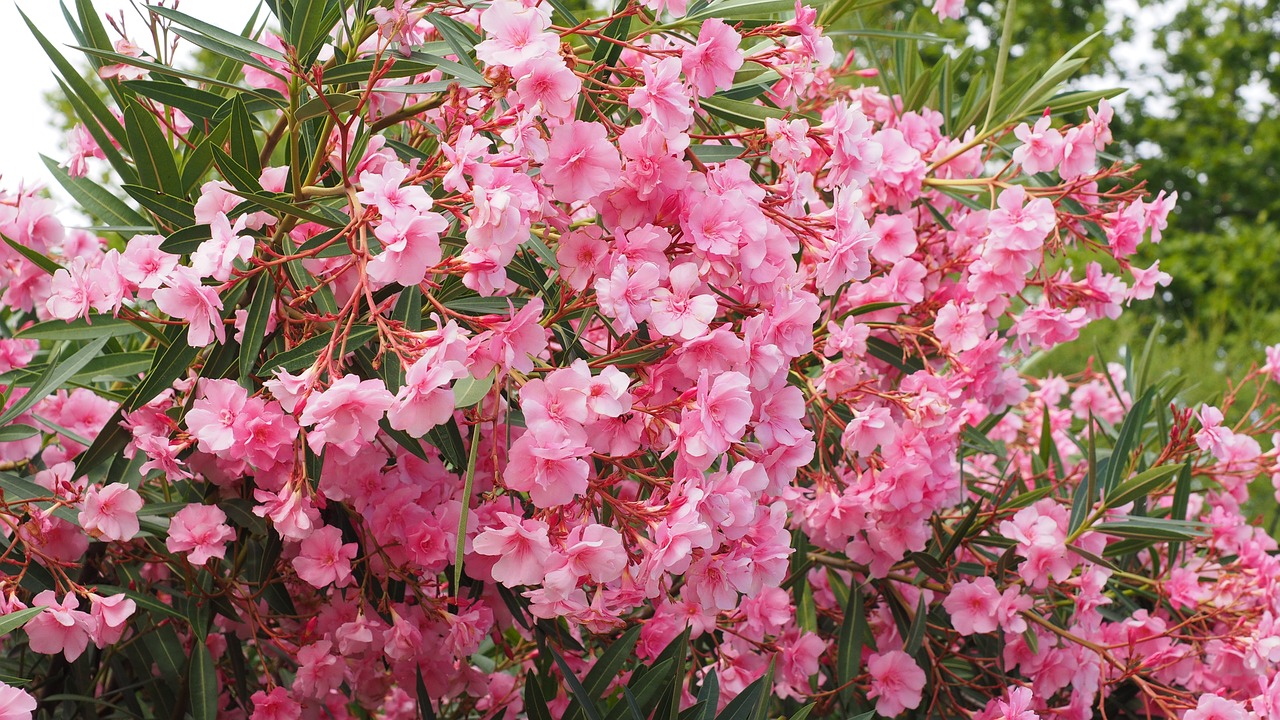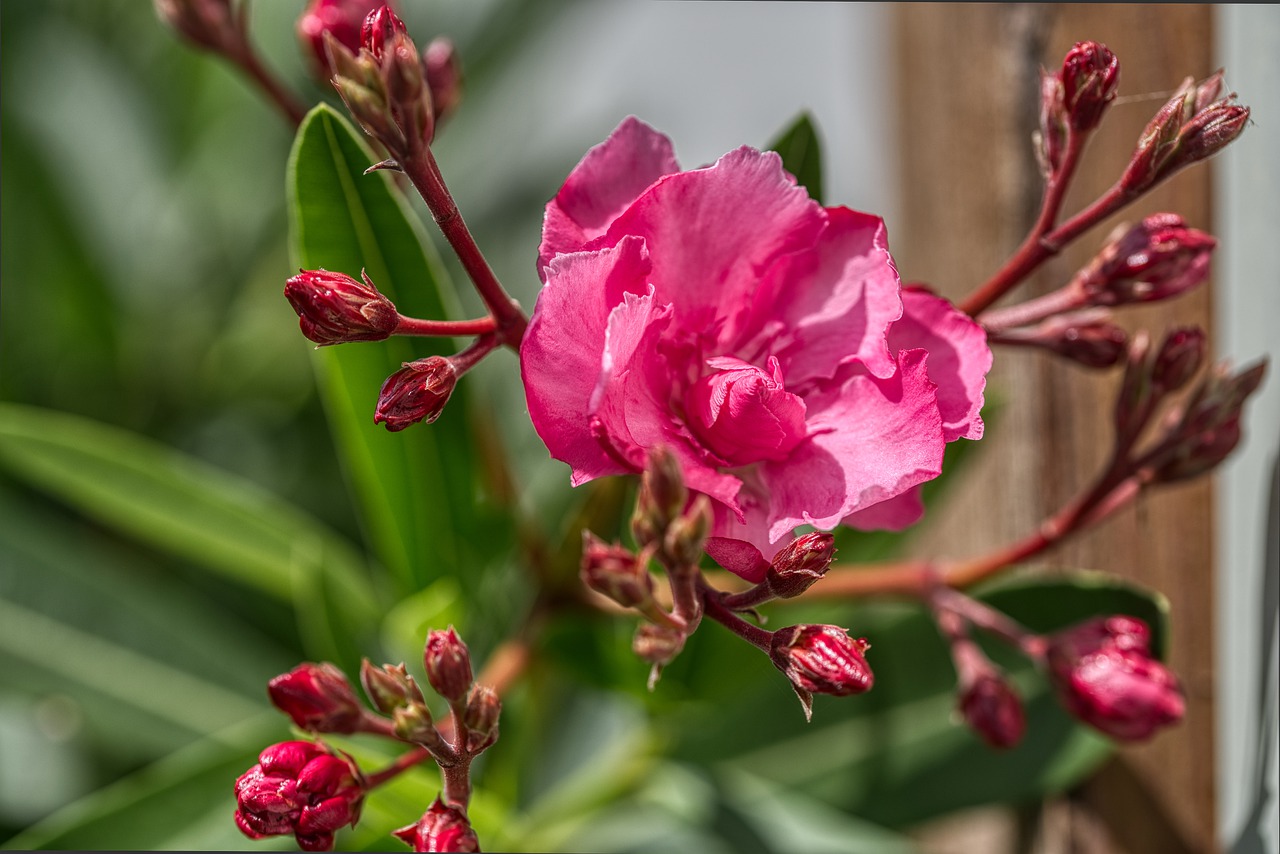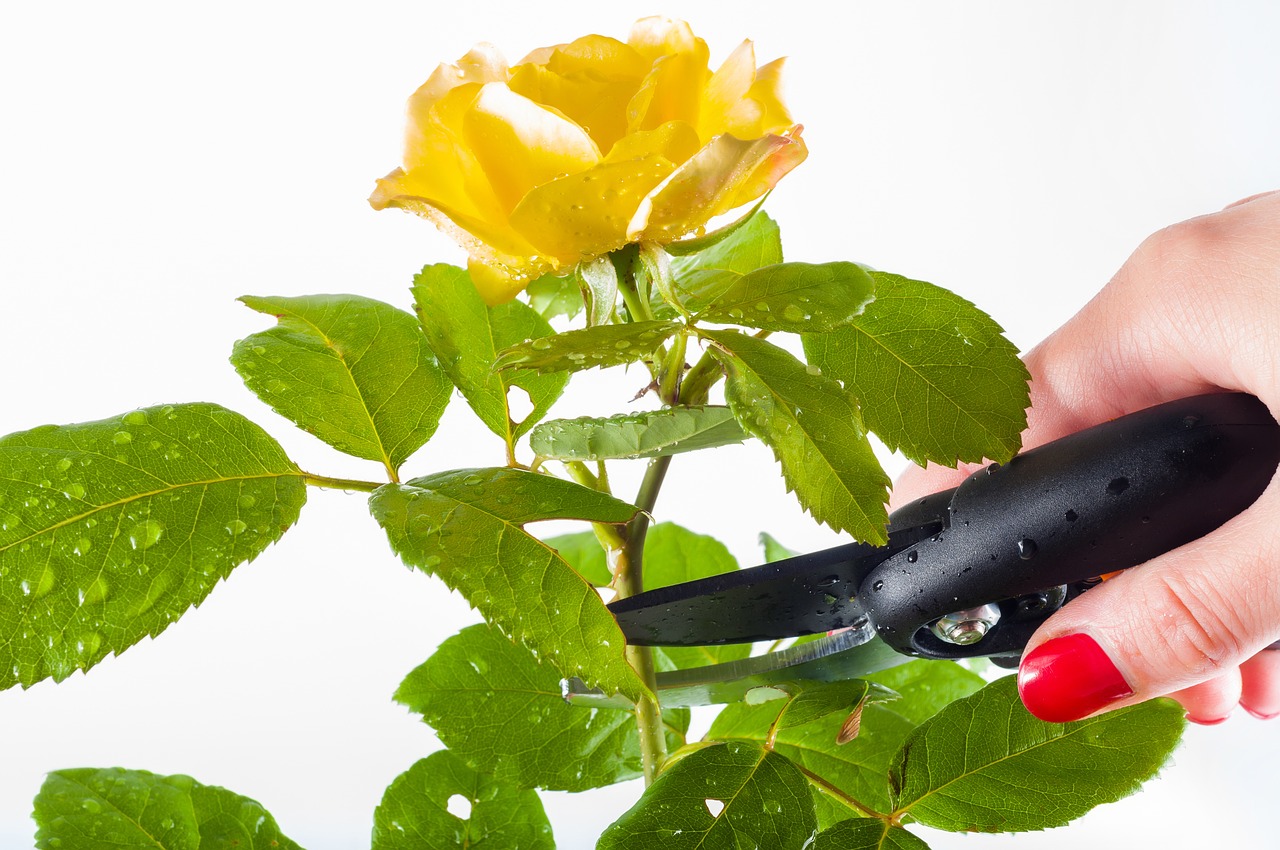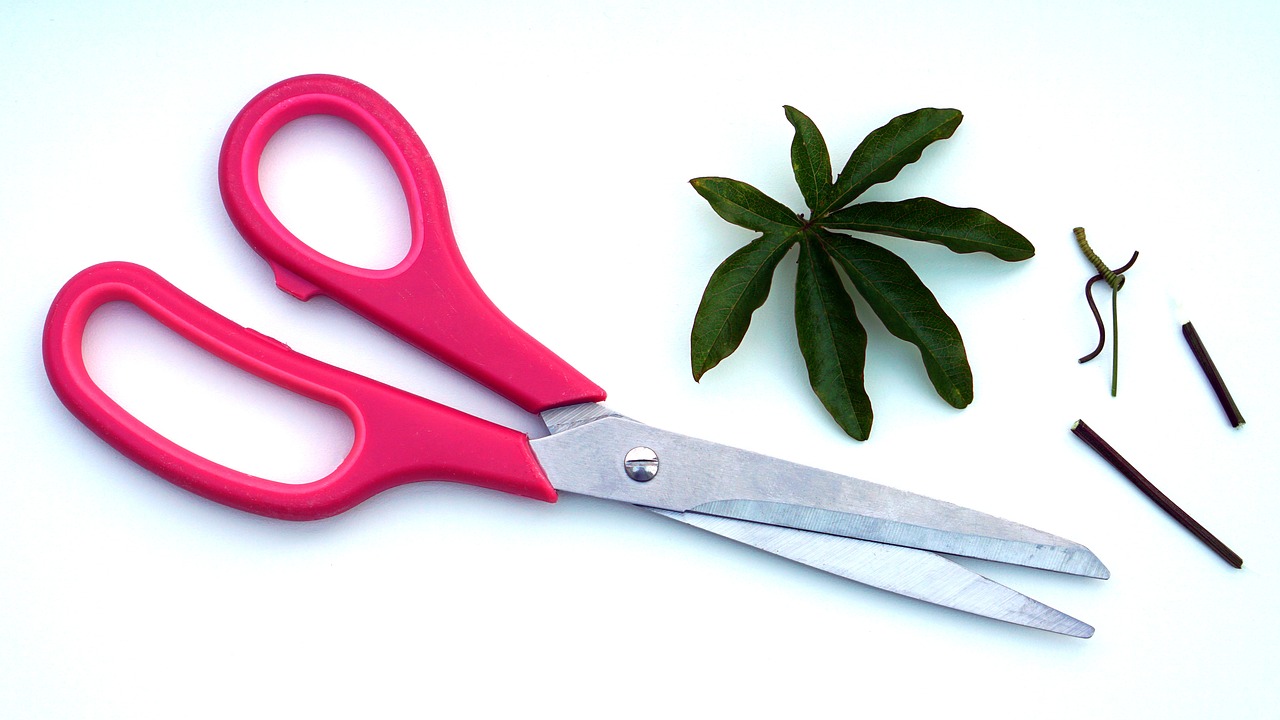If you have an oleander plant or want one, but don't know how to prune it, don't worry! because here we will explain how prune oleanders correctly, as well as telling you when to do it, advice and much more.

Oleander (Nerium Oleander)
Oleanders are perennial plants by nature, one of the Types of bushes that can be grown in gardens, with warm and temperate climatic conditions. They are also known by other names, such as rose laurel, baladre, trinitaria, garden laurel, flower laurel, Roman laurel, among others.
It is a shrub that usually forms like a small tree, its leaves are deep green and produce very beautiful flowers during the spring and summer.
They can reach a height of 2 or 3 meters, they are plants that are very resistant to times of drought, however, oleanders live very well in semi-shade, although of course they should be kept in a place where they can perceive sunlight so least a few hours a day.
Oleanders are very beautiful plants, but to be able to prune these bushes, the first thing we will need are gloves to protect our hands, because we will surely have to cut one or another branch and it is necessary to know that this bush is toxic, due to this nor should it be consumed by anyone.
When should you prune oleanders?
The pruning of the oleander must be done every time it is necessary, this means that if you want your plant to grow and develop properly, or if it happens that it is growing in a very disorderly way, then you have to prune each whenever necessary, especially if you want to have a hedge of oleanders or give it the shape of a tree.
Before carrying out the pruning, the first thing to do is look for the necessary tools or the ones we need to prune oleanders, such as pruning shears for thin branches and a hand saw to cut thicker branches, while if we are going to clean and disinfect it, for this we can use pharmacy alcohol.
To perform the oleander pruning, the plant should not be in its flowering period, and the pruning that requires greater maintenance or cleaning of its structure should be carried out in the periods that are at the end of winter, with the intention that the oleander can recover better.
How to prune oleanders?
Something very important that we must take into account is that the oleander is a bush that is very resistant to pruning, so its stems can be cut and left up to half their usual height, in this way new leaves will come out after a few weeks.
These plants only require minimal care and with this they will have the opportunity to develop very well, in addition to being able to give them the most desired shape, which can be as a low bush or as a Tree.
Tools Needed to Prune Oleanders
prune oleanders It is a task that at first glance seems very simple and as we mentioned before, in order to carry out this procedure, the first thing we must do is look for the necessary tools, which we mention below:
- Protection gloves
- Hand saw
- Pruning shears.
- Protective goggles
Types of pruning oleanders
There are several types of oleander pruning and they all have a different objective, among which we can mention the following:
Flowering pruning
It is a simple pruning that is carried out on oleander plants, in order to prepare the bush for its next flowering period, because when they are cut, their flowering will be safe.
Bloom pruning should be done every year, that is, after the main summer bloom occurs, around September in the Northern Hemisphere. For no reason should this pruning be done during the spring, since the flowering will be much less numerous.
As mentioned before, this pruning is to help the oleander be ready for its next bloom. The oleander can be cut enough, although it all depends on how you want to have the bush, if it is more compact or smaller.
If you wish, you can sprout the plant and keep it that way, with a larger size, although somewhat depopulated below. You can also do a drastic pruning by cutting the plant to a greater extent.
However, the most common pruning that is carried out on oleanders is to make the cut of the third part in the upper area of the stems, which have already flowered, and lower the sides by at least 15 centimeters.
Nodes above the ground, stunted and intersecting branches should be cut, stems that have not flowered should not be cut. In the event that you want to leave your plant larger, you should cut back below its wilted flowers.
Cleaning pruning
It is a pruning that is carried out with the purpose of helping to clean and refresh the plant of the remaining elements and that do not benefit it, such as dry branches and leaves that are broken or diseased, so that the oleander reaches an adequate development. and improve your appearance.
This pruning should be done to do a deep clean on the oleander plants, and the items that should be cut are all the branches that are dry, broken, diseased or dead. Do not leave any pieces of branches that are dry, this will greatly benefit the plant and help it look beautiful.
No regrowth should be left that may have arisen from the same root, in addition to removing all the sprouts from the foot of the bush, on all those that are weak or poorly located and do not benefit their development as a branch of the bush.
Eliminate the branches that are intertwined, poorly oriented or that entangle the bush, and that do not help at all in the aesthetics of the oleanders, also the branches that protrude a lot from the bush due to their excess vigor, such as suckers.
Undesirable elements such as stems, leaves, overripe fruit, and dried, wilted, or diseased flowers should be removed. If necessary, correct the asymmetry to improve the appearance, if you want to reshape the bush, now is the time to do so.
Renovation or rejuvenation pruning
The objective of this pruning is to remove the parts that are aged from the oleander, so that new shoots emerge. It is a pruning to renew and give strength to this plant, however, this oleander pruning is very radical, it is done in order to rejuvenate the plant, although it can also be done gradually.
There are two types of rejuvenation pruning, which are as follows:
- Drastic rejuvenation pruning: In this pruning, the entire bush must be trimmed to the ground level and it should only be done if the plant has the strength to tolerate it, then it must be given the proper care of irrigation and fertilizer.
- Progressive rejuvenation pruning: It is done with the purpose of eliminating 50% of the branches, trimming them flush with their insertion. Branches left on the tree should be cut to half their length, or just a third of the way from the top of the best bud we can find on it.
Prune Oleanders to a Low Bush Shape
If you want to have an oleander that you can use for a hedge, you should prune it and leave the vast majority of its stems but with very little height, however, this will only depend on what you want or how you want the plant.
For example; In case you want to delimit a path within the same garden, the important thing is that the oleander hedge is about 50 centimeters. But if instead you prefer it to be right in front of a wall or a wall, which already delimits the lot, then a hedge of 1 or 1,5 meters is ideal.
Prune Oleander Trees
As real trees, oleanders are incredible and much more so when they are in bloom. The great detail is that this is a plant that tends to sprout shoots from the root, so you have to prune them every time it is necessary to remove them.
The best thing is that it can be easily achieved in the form of a tree. The first pruning that is done to the oleander is usually very radical, because these can come with multiple stems at the time of purchase.


